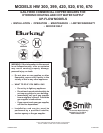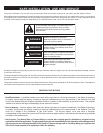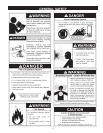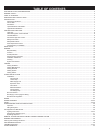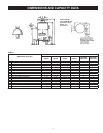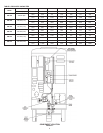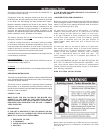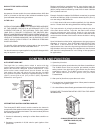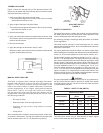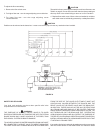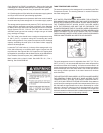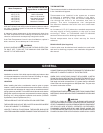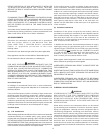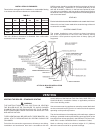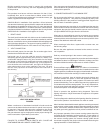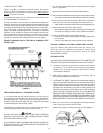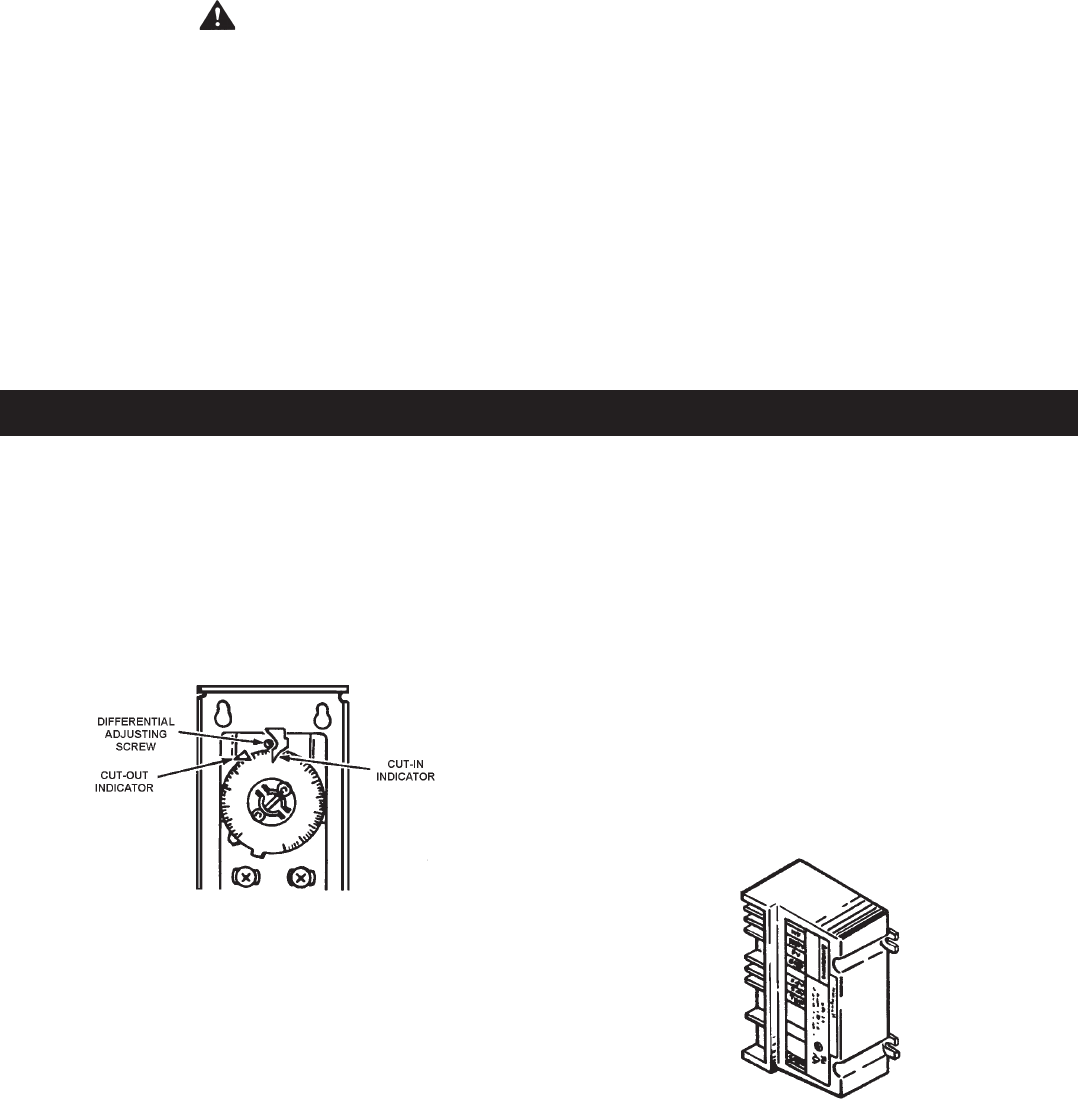
8
HIGH ALTITUDE INSTALLATIONS
IN CANADA
Acceptance of these models for use at altitudes above 2000 feet
(600 m) is based on eld test of the individual installation by the
provincial/state authority having jurisdiction.
IN THE U.S.A.
WARNING
INSTALLATIONS ABOVE 2000 FEET REQUIRE REPLACEMENT
OF THE BURNER ORIFICES IN ACCORDANCE WITH THE
CURRENT EDITION OF THE NATIONAL FUEL GAS CODE
(ANSI Z223.1). FAILURE TO REPLACE THE ORIFICES WILL
RESULT IN IMPROPER AND INEFFICIENT OPERATION OF THE
APPLIANCE RESULTING IN THE PRODUCTION OF INCREASED
LEVELS OF CARBON MONOXIDE GAS IN EXCESS OF SAFE
LIMITS WHICH COULD RESULT IN SERIOUS PERSONAL
INJURY OR DEATH.
For specic orice requirements, please refer to the appropriate
section of the National Fuel Gas Code ANSI Z223.1.
You should contact your gas supplier for any specic changes which
may be required in your area.
Ratings specified by manufacturers for most boilers apply for
elevations up to 2000 feet (600 m). For elevations above 2000 feet
(600 m) ratings must be reduced by a rate of 4% for each 1000 feet
(300 m) above sea level.
Example: If a boiler is rated at 610,000 Btu/hr. at sea level, to operate
the boiler at 5000 feet (1500 m) it must be derated by 20% (4% x 5)
to a new rating of 488,000 Btu/hr.
A. O. Smith does build some models specically for high altitude
service. Please check the rating plate before making changes.
The input reduction is primarily achieved by reducing the size
of the main burner orifices. To do this, the main burner orifices
require replacement with orifices sized for the particular
installation elevation. When ordering, be sure to state the model
number and the altitude of the location where the boiler is being
installed.
Upon field deration of the boiler, adjustment to the gas pressure
regulator is required. See CHECKING AND ADJUSTING
THE INPUT in this manual for inlet and manifold pressure
requirements. Also, due to the input rating reduction required at
high altitudes, the output rating of the appliance is also reduced
and should be compensated for in the sizing of the equipment
for applications.
AUTO RESET HIGH LIMIT
The high limit is a safety device wired in series with the
ignition system. Set the high limit control to approximately 10
0
F
above the maximum designed system temperature. If the
boiler outlet water temperature should exceed the high
limit setting, the main gas valve will close but the circulator
will continue to operate. Maximum adjustable setting is 115
0
C
(239°F) cut-out with a 3
0
C (5
0
F) to 25
0
C (45
0
F) adjustable
differential, see Figure 2.
FIGURE 2.
INTERMITTENT IGNITION CONTROL MODULE
The Honeywell S-8600 control module contains the electronic
components of the system and also serves as a control wiring system
for the controls mounted on the heater. The control module performs
the following functions:
1. Checks for safe-start by sensing for a false ame condition on
start-up.
2. Generates a potential of 15,000 volts for spark ignition of the
pilot burner.
3. Opens the pilot valve.
4. Discontinues ignition spark when the pilot flame is established.
The S-8600 control used on propane gas models provides
safety lockout if the pilot fails to ignite within the pilot flame
establishing period. The S-8600 control used on natural
gas models continues trial for ignition until pilot flame
is established.
5. After proof of pilot ame, opens then main valve.
6. On a power loss, shuts the heater down. When power is restored
it will begin a new ignition cycle.
7. On a loss of ame, shuts off main gas and starts trial for pilot ignition.
PLEASE SEE TROUBLESHOOTING SECTION FOR MORE
INFORMATION.
S-8600 INTERMITTENT IGNITION
CONTROL MODULE (IID)
FIGURE 3.
CONTROLS AND FUNCTION



